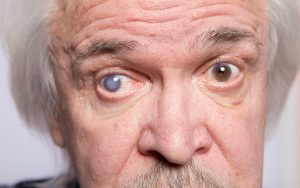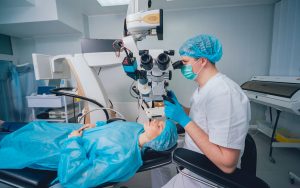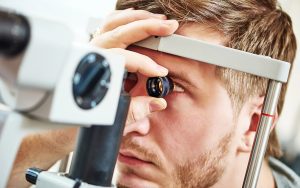Are Children Eligible For LASIK?

LASIK surgery has become a standard procedure for most people looking to remove the daily struggle of wearing glasses and contact lenses. The procedure also has a high rate of success, making it an ideal opportunity to get part or all of your eyesight back. That being said, is it okay for children to undergo LASIK surgery?
This post will look at LASIK surgery and the best ages suitable for the procedure. In addition, it will also look at some of the conditions that might require children to get eye surgery and the best alternatives that an optometrist would recommend for the issue. If you have any concerns about your child’s vision, you should always visit a pediatric optician before making any decision.
What Is LASIK Surgery?
LASIK surgery, also known as laser-assisted in situ keratomileusis, is a form of eye surgery used to correct refraction impairments. During the procedure, the surgeon uses a laser to make precise changes to the shape of the clear tissue at the cornea (the front of the eye).
The procedure is ideal for people with myopia (nearsightedness), hyperopia (farsightedness), and astigmatism. LASIK is a better option as it has higher success rates without needing further vision correction.
Should Children Undergo LASIK Surgery?
The Food and Drug Administration (FDA) has approved the procedure for people aged 18 and older. Most LASIK eye surgeons agree with this recommendation and only opt for refractive surgery in severe cases in children.
Reason Why LASIK Is Not Ideal for Children
There are several reasons why laser refractive vision correction is not appropriate for children.
1. Vision is still changing
One of the primary reasons why children should not undergo the procedure is because their vision has not fully developed. Eyesight development is still ongoing in the early years, most likely settling in the late teens to early twenties.
For this reason, performing a LASIK procedure too early might permanently alter the development of eyesight. There is also an increased likelihood that refractive errors will not stabilize, leading to further vision impairment.
2. Increased chances of more treatment
Secondly, there is a high chance that the child might have to undergo more than one LASIK procedure in their lifetime.
As previously stated, the eye structure changes as the child ages and stabilizes in their late teens. However, if the refractive surgery is performed too early, chances of success are lower, as the eye constantly changes shape. If a child undergoes surgery, there is a high likelihood that they will return for a second or third operation later.
If you have any concerns about your child’s eye health, it is always a good idea to consult your optometrist. They will recommend the best options to help resolve refractive conditions and only opt for surgery as a last resort.
Eye Conditions and Children
Eye conditions during early development are common among children. However, as they grow up, their vision stabilizes, and these conditions might go away or become easier to manage.
However, in some cases, eye conditions can slowly progress and become more severe over time. For example, nearsightedness can worsen as they grow older and, in severe cases, lead to cataracts in older adults.
In addition, other vision impairments are also associated with family genetics or might be congenital.
Whichever the case, early detection of the condition, can give children a fighting chance to treat and manage the problem altogether. These conditions can impact kids’ learning abilities without a proper diagnosis and prevent them from enjoying much-needed fun activities.
Eye doctors recommend taking in a baby for their first check-up exam at six months old. If the pediatric ophthalmologist gives them the all-clear, the next appointment should be scheduled when they are three years or before they start school.
Early intervention is always best if the optometrist discovers an underlying eye condition. The doctor will recommend approaches to help treat and manage the problem before it develops. In most cases, corrective glasses are always the best solution. However, the doctor might opt for eye surgery like LASIK, if they are sure it will improve the condition.
Alternatives to LASIK Surgery
Though LASIK procedures are highly recommended for their success, other non-LASIK procedures can help correct refractive errors.
One of the most common techniques is using corrective glasses and contact lenses to help deal with the issue. Corrective lenses compensate for the refractive impairment in the cornea and help focus the incoming light onto the retina.
Surface ablation (PRK) is suitable for kids with severe refractive errors. Though PRK also uses a laser to reshape the cornea, it removes a small outer layer of the cornea, which grows back over time. The procedure helps improve and stabilize their vision.
Which Is the Best Age to Have A LASIK Procedure
Let us have a breakdown of the best age range to get LASIK surgery.
Late Teens to Late Twenties
Though the FDA approves the procedure for people around 18 years and older, most ophthalmologists recommend waiting a few more years for eyesight to stabilize. In most cases, a person’s eyesight fully develops when they are 21 years old, increasing the chances of success.
The late Twenties to Thirties
If you are in your late twenties to thirties, this is the ideal time to get LASIK surgery. The probability of your cornea changing shape is lower, making your prescription more stable. In addition, you also have a lower risk of developing presbyopia, a condition where your eyes struggle to focus on near objects.
The forties
During your forties, there is a likelihood that presbyopia has started developing. Refractive surgery for nearsightedness is a good idea, as it also helps correct the condition. On the other hand, if your procedure is to correct farsightedness, you may still require to wear glasses or contacts to correct presbyopia.
The fifties and Upwards
In your fifties, most eye conditions might have progressed, and you may also develop other conditions like cataracts and dry eye. It is always important to seek help from your eye doctor before deciding to have LASIK surgery.
Conclusion
Though LASIK surgery is safe, the best time to undergo the procedure is during your twenties or thirties. The procedure is not recommended for children below the age of 18 years unless they have severe refractive errors in their eyesight.
If you have questions about your eye health and the best treatment to correct your sight, always consult your optometrist first.




